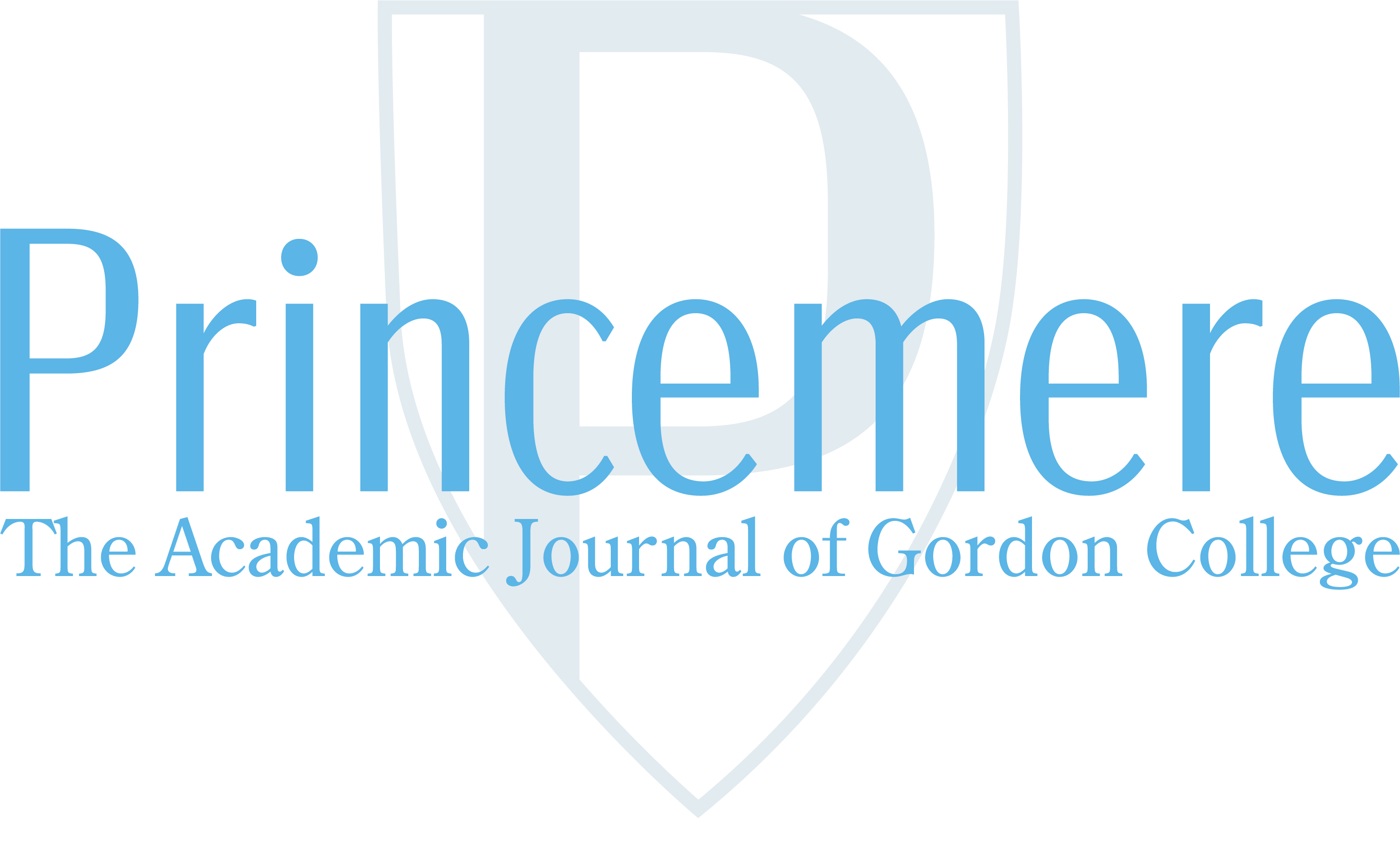“I wrote this story for you, but when I began it I had not realized that girls grow quicker than books. As a result, you are already too old for fairy tales, and by the time it is printed and bound you will be older still. But someday you will be old enough to start reading fairy tales again. You can then take it down from some upper shelf, dust it, and tell me what you think of it. I shall probably be too deaf to hear, and too old to understand a word you say, but I shall still be your affectionate Godfather, C. S. Lewis.”
C.S. Lewis’ 1950 The Lion, the Witch, and the Wardrobe is a fantasy novel set in the fictional realm of Narnia. Among mythical beasts and talking animals is the narration of the adventures of four ordinary children––Peter, Susan, Edmund, and Lucy Pevensie. These children play central roles in the unfolding history of the Narnian world–but also our own. The story follows the conflict of magic and the meaning that it gives to not only the lives of the Narnians, but the lives of the outsiders who arrive there. Throughout the book, there will inevitably be conflict and war that strike Narnia at its core as the characters are shaped by the evil in the Narnian world. However, The Lion, the Witch, and the Wardrobe are not the types of escapist fantasy novels that other books can be portrayed as. C.S. Lewis still rings true: there does come a time where we can start reading fairy tales again––and that time arrives when we realize that Narnia is not simply a fairytale. These children are not escaping their problems and reality to go into some utopian, unreal, and magical world; Narnia is where they face the very same spiritual issues that exist in their real-world––and thus in our own world.
War, strife, and chaos are common themes that occur often in the world of Narnia; however, only after all this evil does peace come. Peace serves as that reflection of the life we live in. Having evacuated to the English countryside from London following the outbreak of World War II, the four Pevensie children are framed in light of the world of twentieth-century Europe, which was also encountering evil and the destruction of children in the form of Adolf Hitler. The bombing of civilians, disruption of families, and the impact on children all contribute to the context, inspiration, and starting point of The Chronicles of Narnia (Veith 43). While many different conflicts occur in the novel, the most distinct is the White Witch, otherwise known as the Queen of Narnia. Her sole desire is to capture and destroy the Pevensie children. To contextualize her utter hatred for the Pevensies, it serves well to offer a backstory.
At the beginning of the novel, Mr. Tumnus, the faun that encounters Lucy first upon her arrival in Narnia, takes her back to his home. He welcomes Lucy into his home, offering her tea while he plays the flute (The Lion, The Witch, and The Wardrobe 13). He quickly confesses to Lucy that he has been hired by the White Witch to be on the lookout for any Children of Adam and Eve so that he might bring them to her. Even more so, he states, “Why it is she that she got all Narnia under her thumb. It’s she that makes it always winter. Always winter and never Christmas; think of that!” (The Lion, the Witch, and the Wardrobe 15). Like the real world that we inhabit, Narnia is under a curse. While there it is always winter, in our world, winter is simply one season when the plants and trees become lifeless. Though a spark of life does remain––blooming in the resurrection of spring––winter signifies a time of death for both Narnians and us.
The second time that she returns into the wardrobe, her brother Edmund follows her into the wardrobe and meets the White Witch. Upon meeting the White Witch, she gives him something hot to drink–something different–something he has never had before. She asks him what he wants to eat and he requests Turkish Delight (The Lion, The Witch, and The Wardrobe 24). Turkish Delight is a kind of candy that is very sweet and could form an addiction. As Edmund eats the Turkish Delight, he answers the Queen’s questions about his siblings––a Judas-like betrayal for food rather than coins. Why? Edmund’s addiction to the witch’s Turkish Delight is not simply due to deprivation of sugar: it is an enchantment–an idol–of something he longs for dearly. Perhaps the two most obvious implications of Edmund’s desire are that they serve a reminder of the good times with his family before the war. Due to the shortage of sugar due to the war, it seems probable that Edmund wanted something that he could indulge on. The story illustrates a concept that could be foreign to us today––that there are real, psychological effects that the lack of sugar has on people, particularly children, when they have been deprived of it. As in the real world, Edmund has formed an addiction that will be hard to forego. One characteristic of an addiction is that as the craving grows, the actual pleasure grows less, requiring more and more stimulation to achieve the desired effect (Veith 61). Thus, eager for more Turkish Delight, he not only asks how to get more, but he has to get more. The Witch provides him with his deepest craving and tells him to bring his siblings to her and he would receive all the Turkish Delight that he could imagine. The point of the Turkish Delight is to show that just as Edmund is now in bondage to the witch, so are the real sinners in bondage to sin.
Eventually, all four children find themselves in the wardrobe. Peter and Susan realize they were wrong about Lucy and apologize. Peter realizes that Edmund was lying and calls him a “poisonous little beast” (The Lion, The Witch, and The Wardrobe 36). Instead of repenting, Edmund becomes resentful and starts to desire to act out against his siblings. They all go to Mr. Tumnus’s home only to realize he has been arrested for treason and for fraternizing with humans––the queen’s enemies. Edmund starts to wonder: “How do we know that the Fauns are in the right and the Queen (yes, I know we’ve been told she’s a witch) is in the wrong? We don’t know anything about either. (The Lion, The Witch, and The Wardrobe 39). His moral failings have started to corrupt his thinking, just like sin does when let our failings take control of our lives. Edmund has taken a very sharp turn for the worse… he starts to question whether there is even a standard for right and wrong.
The 4 children are assisted by the Beaver family who are friends with the arrested, Mr. Tumnus. The Beavers talk about the prophecy that says how the White Witch’s rule will end when “two Sons of Adam and two Daughters of Eve” sit on the four thrones of Cair Paravel. The Beavers also reveal that Narnia’s true ruler, Aslan, is returning to the Stone Table after being absent for a very long time. In disbelief that the Beavers believed in someone other than the White Witch, Edmund leaves the Beaver’s Home to find the White Witch and succeeds. Once again, Edmund betrays his siblings for Turkish Delight. However to his astonishment, he is imprisoned and receives stale bread. Edmund soon learns that sinful pleasures cease to be a pleasure. All enjoyment ultimately from God, and only pleasures pursued in his will can give long-term satisfaction (Veith 87). He sees Mr. Tumnus turned into stone, a consequence of not following the White Witch’s orders to bring the Pevensie children to her. In the meantime, the other three siblings have made it to the Stone Table, where they are greeted by Aslan and other animals. Finally, Edmund is reunited with his siblings. He and Aslan have a long-needed conversation and make it clear to the Pevensie children there is no need to talk about the past. However, despite there being reconciliation and forgiveness, there is a debt to be paid.
The White Witch receives an audience with Aslan, after Edmund is rescued by Aslan’s army. She arrives stating that he has a traitor amongst them. The Deep Magic is a divine irrevocable law which says every traitor belongs to the White Witch and that their treachery gives her the ability to kill. The witch points out that this law has been carved into the Stone Table. In one sense, the repercussions the Deep Magic has on Narnia is similar to that of our world. The words inscribed on the Stone Table are comparable to that of the Stone Tablets that were brought down from Mt. Sinai by Moses: The Law (Veith 91). As we have broken the law through sinning, we have violated the law, and all have earned death. Aslan and the White Witch have a discussion and they come to a secret agreement–she would kill him later that night and in exchange she would renounce her claim on Edmund. Comparably to God sending his son Jesus onto earth to die for our sins. In doing so, Satan renounces his claim on our lives and we are free through Christ.
That night, Aslan leaves the camp, and away from the camp, he is heading for his death. Susan and Lucy, unaware of what is to come, walk with him till they reach the point where Aslan instructs them to go back. Despite those orders, the pair disobey Aslan and watch from the woods to see the situation unfold. They watch as Aslan is bound, stripped of his mane, and humiliated in front of all of his enemies. As Aslan is bound and stripped of his mane, the girls watch with devastating sadness as their beloved friend is humiliated in front of his enemies. Before she strikes him, she stands and exclaims over Aslan with pride:
“And now, who has won? Fool, did you think that by all this you would save the human traitor? Now I will you instead of him as our pact was and so the Deep Magic will be appeased. But when you are dead what will prevent me from killing him as well? And who will take him out of my hand then? Understand that you have given me Narnia forever, you have lost your own life and you have not saved his. In that knowledge, despair and die.” (The Lion, The Witch and The Wardrobe 90)
Leaving her mighty position of power, the White Witch then kills him, leaving his dead body on the Stone Table. Quickly forgetting the weight of her actions, she then leaves to prepare her army to fight against the Narnians. Devastated by what they just witnessed, Lucy and Susan watch over his body throughout the night till it reaches morning.
As morning begins, they become cold and start to walk around. As they walked away from the stone and faced Cair Paravel, they hear a loud cracking noise. As they rather slowly turn around, the pair sees nothing-then they hear a loud resounding “Yes” when they ask: “Is it magic” (The Lion, The Witch and The Wardrobe 94). Aslan makes it clear that there is deeper magic that the witch knew nothing about––a Deep Magic from Before the Dawn of Time.While the girls are ecstatic that he is alive, they wonder about the Deep Magic from the Dawn of Time. While it is true that the traitors have to give up their life for their treachery, there is a caveat; if a willing innocent victim takes the place of the traitor, the Stone “Table would crack and Death itself would start working backward” (The Lion, The Witch and The Wardrobe 98). The Deep Magic from the Dawn of Time is the law that was followed, but the Deeper Magic from Before the Dawn of Time is the gospel (Veith 100). The story is yet from over, while Aslan is alive, he still has other work to complete.
The curse of the White Witch comes to an end as Aslan breathes life into the various stone creatures that fill the White Witch’s kingdom. Similarly, this is like God breathing life is to those of us that have been set free from the bondage of sin. And yet, while the creatures are free, there is still an underlying purpose and work to do. As the witch had assumed that she was victorious against Aslan, she attacked Aslan’s forces led by Peter and Edmund in great numbers and force. When Aslan and the revived creatures arrive at the battlefield, Peter and the witch are locked in a sword fight. Even after Aslan’s death and resurrection, there is still a battle that must be fought. Aslan races toward Peter and the White Witch, pouncing on her and just like that, she’s dead. The Witch’s followers gave themselves up or they fled to other parts of Narnia. With the death of the Witch, the prophecy can now come to pass, The Golden Age of Narnia can begin.
The time has come for The Sons and Daughters of Adam and Eve to take their rightful place as kings and queens over the world of Narnia. They grow up and reign Narnia for quite some time; the time of peace that followed the Hundred Years of Winter was referred to as the Golden Age of Narnia. At the beginning of their reign, much of the four ruler’s focus was on seeking out and destroying the remnants of the White Witch’s army. Eventually, rebellions and those who sided with the Witch were dealt with. The time after was peaceful. The four rulers kept the peace, made good laws, saved good trees from being cut down, stopped those who tried to interfere with others; they also encouraged people to live their lives out (Ford 204). They drove back the fierce giants of the North and entered into friendships and alliances with countries that were beyond the sea (The Lion, The Witch, and The Wardrobe 107). The titles each of them are given show the growth over their time in Narnia, more so Edmund. His title bestowing him is King Edmund the Just. Due to his personal experience, feeling the power of justice, grace, and the peace that follows after is the best way to appreciate its proper use and value (Schakel 48).
The kings and queens of Narnia live in joy and it seemed that their life in their back home in England was just a dream or a fantasy. When they return to the English countryside, they are children again at the same point as they had left. While years have passed in Narnia, no time has passed back home. In the wardrobe, they have faced many conflicts, encountered sin, grace, and evil. They grew, yet when they return, they are back to normal. On the outside, nothing has changed but, on the inside, they have been awakened. They have seen what sin can do but have also experienced reconciliation and the peace that comes with it. Despite no time passing, they are different people than when they left. The 4 children have experienced the peace that comes with following Aslan. It is only with strife and mayhem, at least in this side of heaven, that we will ever be able to attain peace; Christ is our peace and after his death and resurrection he now offers his peace through the Holy Spirit.
“I am,” said Aslan. “But there I have another name; you must learn to know me by that name. This was the very reason why you were brought to Narnia, that by knowing me here for a little, you may know me better there.” (The Voyage of the Dawn Treader, 247)

Bethany Moy
Bethany is currently a junior studying history and political science. In her free time, she enjoys writing, reading, and hanging out with friends. She loves coffee and boba. Bethany also enjoys listening to music from a variety of artists. She loves Marvel and her favorite superheroes are Bucky Barnes, Loki, and Captain America. Bethany enjoys the beach while reading a book.

